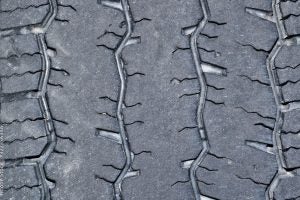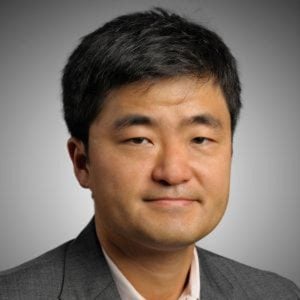Masahiro Ishigami, associate professor of physics, recently received a two-year, $332,552 grant from the U.S. National Science Foundation in recognition of his work’s potential to bridge a knowledge gap in tribology — the study of friction, lubrication and wear.
According to a 2017 U.S. Department of Energy report, up to 1.6% of the United States’ annual GDP (about $300 billion) is lost to friction-induced wear. Worn-down tires are just one everyday example of this type of loss.
As tribology, the science of friction, research advances, friction at nanoscale has emerged as a key piece in the puzzle of how to eliminate or reduce such loss. However, nanoscale friction research has not yet been able to work with the speeds of real-life mechanical systems. This so-called “speed gap” is what Ishigami’s research will tackle.

Ishigami’s long-standing areas of expertise are scanning tunneling microscopy and spectroscopy, both of which enable precise measurement of the variables involved in friction. For this project, he’ll be working with Ashlie Martini, a professor of mechanical engineering at the University of California, Merced, who specializes in frictional theory and modeling. They will build on a previous collaboration that confirmed the existence of ultra-low friction with gold nanocrystals on graphene at high speeds ranging from one half-inch to three feet per second.
The duo is now working on a technique to measure the friction of individual nanocrystals at speeds used for mechanical bearings — used to disperse stress in nearly all machines — and other key applications.
Ishigami says the ability to conduct such innovative research is why he decided to study physics and specialize in nanoscience.
As an undergraduate at MIT, he remembers not being sure whether physics was for him. An advanced physics lab was what eventually cemented his choice of career. There, Ishigami began to feel confident in his ability to “do” science.
“We had set experiments, but I was able to make them open-ended,” he says.

To give his students the same opportunity, he spent years developing an advanced physics lab course for undergraduates at UCF. Ishigami takes pride in how the course encourages would-be researchers to design their own experiments, fully utilize instruments, and learn from their mistakes.
In recognition of how valuable hands-on experience is for all students — especially those interested in science — he included a middle-school teacher training program as part of his NSF proposal. Now that it’s funded, he hopes it will help Orange County teachers energize students and let local youth know they, too, can contribute at the cutting edge of science.




